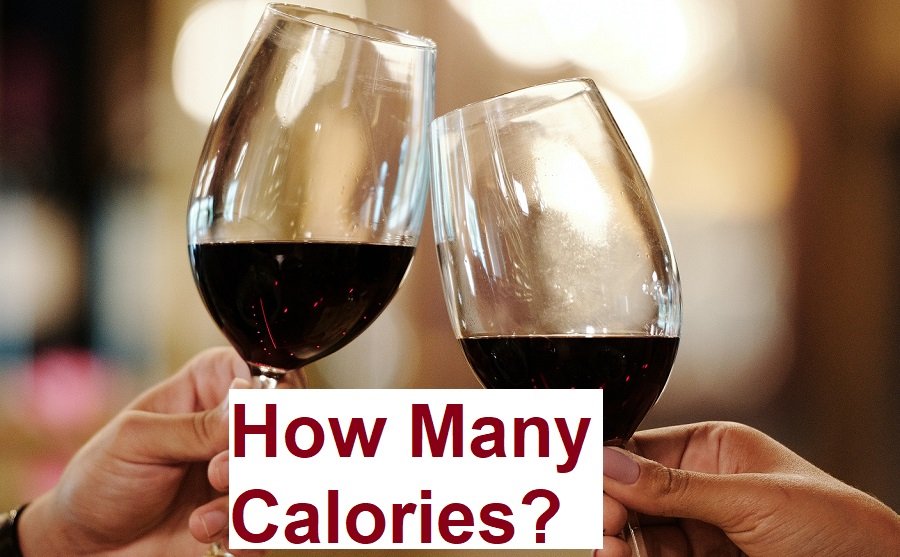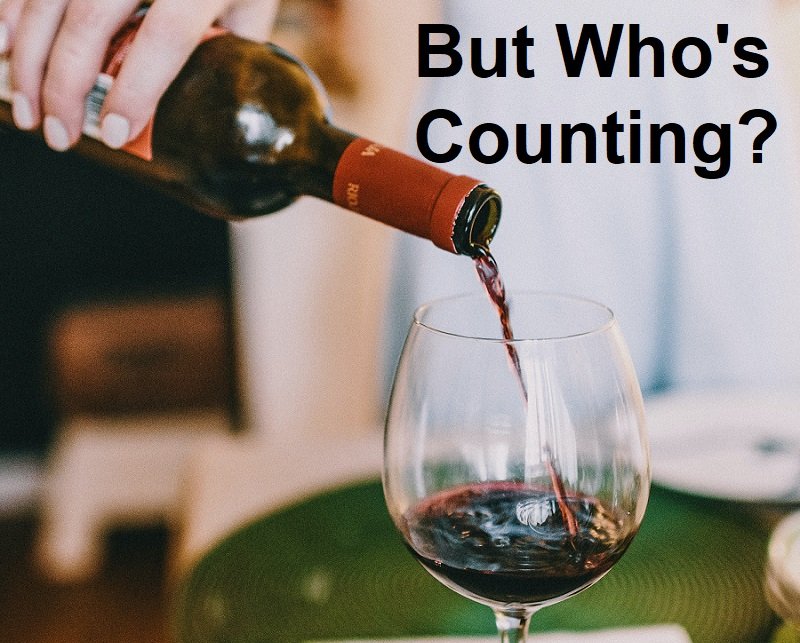
Calories in a Glass of Red Wine May Surprise You

How many calories are in red wine?
Red wines usually have 85 calories per each 100 g. Because wine is poured in ounces usually, on average, a 5 oz glass of red wine contains approximately 120 calories.
It’s not unusual for the calories to vary depending on the type of grape used to make the wine and its alcohol content.
Generally speaking, the higher the alcohol content, the higher the calories in red wine; therefore, wines like Port have more calories than regular reds.
Red wine can still fit into a healthy lifestyle as long as it is taken in moderation with food.
Wine’s calories come from sugar & carbs
While lower-alcohol wines contain fewer calories, they contain less sugar. By fermentation wine naturally converts sugar from the grape to a liquid that has been dissolved.
It is common knowledge that the more sweet a drink is the more sugar.
Sweet dessert wine
White wine, in particular, is the most common form of sweet dessert wine. While most wines have nearly the same alcohol content (around 13%), sweeter wines tend to have a much higher content typically ranging from 18-24%.
As with other alcoholic beverages, it’s important to monitor your calorie intake when consuming dessert wines.
Depending on how much sugar has been used in the production process, it can contain anywhere up to 160 calories per serving.
Keeping this in mind, one can still enjoy a glass of wine without compromising too much of their daily calorie goals!
Sweet wines such as riesling have a higher sweetness punch than dry wine. Dessert wine contains about 20 grams of carbs whereas regular white wines contain about 4 grams of carbohydrates.
A dry white wine like Sauvignon Blanc has more carbohydrates. For example, Sauvignon Blanc: 3 grams of carbs. Chardonnay: 3.2 grams of carbs. Pinot Grigio: 3.8 grams of carbs.
How can I calculate red wine calories?
Typically, a regular 750ml bottle of wine holds 25.36 oz. The red wine calories average around 611 per bottle.
You may have noticed that wine is almost always poured by the oz. So here is an easy way to calculate red wine calories.
- 1 oz = 24 calories.
- 5 oz = 120 calories.
- 9 oz = 217 calories.
- 10 oz red wine calories total 241.
For real easy math say 1 oz = 25 calories in red wine.
A quick test.
How many calories are in an 8 oz glass of red wine?
If you said around 200 calories you are correct.
Some red wines have a higher concentration than those listed here and others are more fortified or more complex.
If you want to have an accurate calories count it is important to know its ABV. Typically one serving contains approximately 14% ABV and a 5oz pour equals 120 calories.
How many calories are in a 750ml bottle of red wine?
A glass of 5 oz red wine with 14% alcohol content contains 106 – 132 calories, and a 750ml bottle has 530 – 611 Cals in red wine depending on the type of red.
How many calories are in a 750ml bottle of Cabernet Sauvignon?
Cabernet Sauvignon ties to Merlot in its lower calorie intake. One cup contains 120 calories, while the full bottles contain 600 calories.
Another easy way to calculate calories at the dinner table is to “Google it” That’s what I do.
Health Benefits of Wine
Some studies suggest wine can be a useful health aid for many. It also urges caution and suggests only light drinking for those who are drinking regularly.
Moderated drinking is defined as the maximum of one drink a day by females, or 1-2 drinks a day by males.
A glass of beer holds 200 or 250 calories and really has no health benefits. A glass of wine has 120 calories but does have healing benefits.
How?
Wine consumption has a number of potential health benefits that make it more special than other alcoholic beverages. For example, red wine is made of polyphenols and antioxidants which are the two main compounds that give it its medicinal properties.
Red wine has high amounts of polyphenols which help reduce inflammation, support immune, and heart health, improve digestion, and slow down the aging process.
Antioxidants like resveratrol can protect against cancer and other health-related issues while also providing cardiovascular benefits.
So in summary, drinking red wine offers many potential health benefits due to the compounds found within, making it a tasty drink choice.
Although drinking wine, especially red wine can be a healthier alcoholic beverage, drinking thousands of alcohol calories each day has many drawbacks.
Is it OK to drink a bottle of red wine a day?
The short answer is no. While many believe that one bottle of wine a day is harmless, it can actually have serious consequences on both mental and physical health in the short term as well as over time.
Each bottle contains up to 650 calories – amounting to almost an entire meal’s worth – with sweet varieties containing even more sugar than usual at 6 grams per bottle or 1.2 grams in each glass.
Excessive drinking may affect you now and down the line! Red wine can contribute to a healthy lifestyle in moderation, specifically one glass of red wine per day.
While it is important to note that red wine does contain alcohol, the alcohol content of red wine is lower than most beers or other alcoholic drinks.
When consumed moderately, one glass of red wine actually has fewer calories and sugar compared to white wine; dry wines are up to 90% lower in sugar content compared to sweet wines.
However, drinking an entire bottle of red wine every day exceeds moderate consumption levels, which puts one at risk for alcohol-related health issues such as liver disease and certain types of cancers.
Therefore, it is not recommended to drink more than one glass of red wine a day.
Other health concerns from wine
Studies have shown that moderate consumption of wine can have health benefits, such as improving heart health and reducing cardiovascular diseases.
However, individuals should be aware of the health risks associated with drinking too much wine.
These include liver damage, obesity, high blood pressure, heart and stroke risks, and even certain types of cancer.
Women are more susceptible to health risks than men; they should not exceed one glass per day while men should drink no more than two glasses.
Drinking in moderation may still come with some health perks but it’s important to be aware of the health concerns and don’t overdo it.
Weight loss and alcohol consumption
Weight loss and its maintenance is no easy feat. Unfortunately, for those looking to lose weight, alcohol consumption can be a major obstacle.
Consuming alcohol adds empty calories to your diet and also results in impaired judgment when it comes to making nutrition decisions.
Gaining weight doesn’t only happen when drinking; due to its high-calorie content, liqueurs and other types of alcoholic beverages can also contribute.
While an occasional glass of wine with friends or a special occasion can’t hurt your overall progress toward your goal weight, it is important to monitor the amount of alcohol you consume and make sure the calories don’t sneak up on you.
Weight loss is possible with proper diet and exercise, but cutting down on alcohol can help you get there that much faster.
Can you gain weight from red wine?
Many people want to know if red wine can lead to weight gain. The fact is that calories in a single glass of red pinot noir are relatively low, ranging from 85-120 calories per 5-ounce glass.
So while it’s true that regular consumption of red wine may contribute to weight gain, one glass of it won’t cause the scale to spike significantly.
Heavy drinkers trying to lose weight drink thousands of alcohol calories each day! But if they were to eat a balanced diet, and limit calorie intake through limiting serving size, weight loss is achievable.
Therefore, despite reports on the health benefits of red wines such as antioxidants, resveratrol, and flavonoids, you should keep in mind its calorie count when consuming it.
Red wine nutrition facts 100g
In just 100g of red wine, you can find a moderate amount of antioxidants, including resveratrol, which has been shown to have potential health benefits for the heart, brain, and more.
Additionally, red wine contains a small amount of fiber, as well as minerals such as potassium, calcium, and iron.
Of course, it’s important to consume alcohol in moderation and to consider the sugar and calorie content, but it’s reassuring to know that a glass of red wine can offer some nutritional value alongside its enjoyable taste.
What color wine has the most calories?
Typically red wines are the most caloric of the colors of the wine. Rose wine contains about 80% calories per 100ml. White wine contains about 73-83 calories per 100ml.
Generally speaking, red wine has more alcohol, and wines that have high alcohol content usually contain more calories than wines with low alcohol.
This is because lower-alcohol wines have more carbs and protein. Alcohol has 7 calories per gram, while protein is 4 calories.
Studies have found that pinot noir has the highest calorie concentration among all of the different color wines.
On average, pinot noir contains 100-125 calories, while the low-calorie wines tend to be less than 100 calories per glass, and white wines are usually on the lower end with 75-90 calories.
However, if you’re willing to sacrifice a few more calories for a little extra flavor, Cabernet Sauvignon is an excellent choice.
But because this type of wine tends to be higher in alcohol and sugar content, it may contain up to as many as 175 calories per glass.
If you’re looking for fewer calories without sacrificing flavor, try pinot grigio or pinot blanc which tend to be even lower in calories than pinot noirs.
Does wine have nutritional value?
Nutrition facts of wine depend on the type but most 5-ounce glasses are the same.
For example, most contain,
4 grams of carbs, 1 gram of sugar,
Magnesium 4%, Vitamin B6 4%, Iron 4%, Riboflavin 3%, Phosphorus 3%, Niacin 2%, Calcium, vitamin K, and zinc 1% of the RDI.
It’s important to be aware of nutrition facts when making a wine selection. Depending on the type of wine, nutrition facts can vary.
With just one serving size, you can find information like caloric intake and carbohydrate counting right on a wine label.
But keep in mind, this only applies to drinking a single glass of wine or less, not the whole bottle!
Knowing the nutrition facts of different types of wines can help you choose wisely to meet your nutrition needs.
What is the best low-calorie red wine?
Red wine is a popular choice for those who want to indulge in a rich and flavorful drink.
However, for health-conscious individuals, the high-calorie content of many red wines can be a concern.
Luckily, there are options for those looking for the best low-calorie red wine. These wines generally have fewer than 100 calories per glass, making them a guilt-free option for a relaxing night in or a social gathering.
To find the best low-calorie red wine, look for wines made from grapes with a low sugar content, such as Pinot Noir or Cabernet Sauvignon.
Additionally, seeking out vintages with lower alcohol content can also help reduce calorie intake. Remember, while a lower calorie count is certainly desirable, the taste is just as important.
Be sure to try a few different options to find the one that suits your palate the best.




